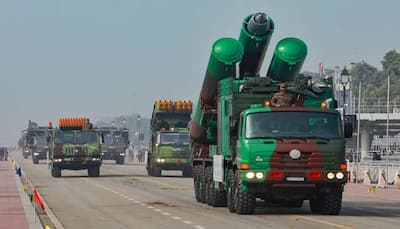New Delhi: When the Indian Air Force struck nine Pakistani airbases with BrahMos missiles during Operation Sindoor, the impact reverberated far beyond the subcontinent. The precision, speed and devastation caused by these supersonic missiles sent a message loud and clear: India is no longer just a buyer of world-class weaponry, it is also a producer.
Widely considered one of the fastest and most accurate cruise missiles, the BrahMos gained overnight celebrity status in military circles. It can be launched from land, air or sea, travels at Mach 3 speed (three times the speed of sound) and can strike within a meter of its target. Its blistering attack on Pakistani bases like Rafiqui and Mureed left their air defences helpless. Pakistan simply could stop a single BrahMos in flight.
The world took notice. Countries across Southeast Asia, the Middle East and even South America began approaching India with interest. Nations like the Philippines, which became the first official buyer in 2022, were soon followed by Vietnam, Indonesia, Egypt, the UAE, Saudi Arabia and Brazil – all of them eager to acquire the missile that left Pakistan’s defences in tatters.
However, there is a significant roadblock. India cannot sell BrahMos freely as the missile is not entirely Indian.
BrahMos is the result of a joint venture between India’s Defence Research and Development Organisation (DRDO) and Russia’s NPO Mashinostroyeniya. The BrahMos Aerospace oversees the missile’s production, but every sale to a third country requires Moscow’s approval. Both nations have a 50-50 stake in the missile’s technology. And therefore, India cannot export it without Russia’s formal consent.
This veto power has major strategic implications. For instance, even if a country like Indonesia is ready to sign a deal, negotiations can stall if Russia is hesitant due to its geopolitical interests or existing alliances. In case of Middle Eastern countries such as Saudi Arabia or the UAE, nations with close U.S. ties and complicated relationships with Moscow, Russia might have serious reservations. And in regions like the South China Sea, where tensions are high, Russia may prefer to avoid escalating conflicts by indirectly arming one side through BrahMos sales.
Even countries India sees as key defence partners must wait for the Kremlin’s nod.
Adding to this complexity is India’s commitment to the Missile Technology Control Regime (MTCR), a global agreement that prevents the export of missiles with a range beyond 300 kilometers to non-member states. To stay compliant, the export version of BrahMos has a capped range of 290 km – much lower than the extended-range variants India now uses itself, some of which can reportedly reach up to 800 km.
So, not only does India need Russian approval, it also has to limit the missile’s capabilities for international buyers.
This dual restriction, Russia’s co-ownership and MTCR rules, has exposed the paradox in India’s defence ambitions. On one hand, India wants to become a global arms exporter and reduce its reliance on foreign suppliers.
The irony could not be sharper. The very missile that showcased India’s military prowess against Pakistan has now become a reminder of its dependence. If New Delhi wants to use BrahMos as a tool of diplomacy and deterrence, it will have to either renegotiate export terms with Moscow or accelerate development of a completely indigenous alternative with no strings attached.
Until then, the BrahMos will remain India’s deadliest weapon, but one it cannot fully unleash on the global stage.
Stay informed on all the , real-time updates, and follow all the important headlines in and on Zee News.








